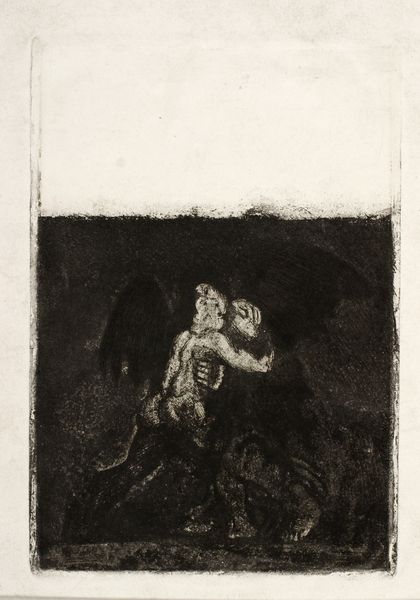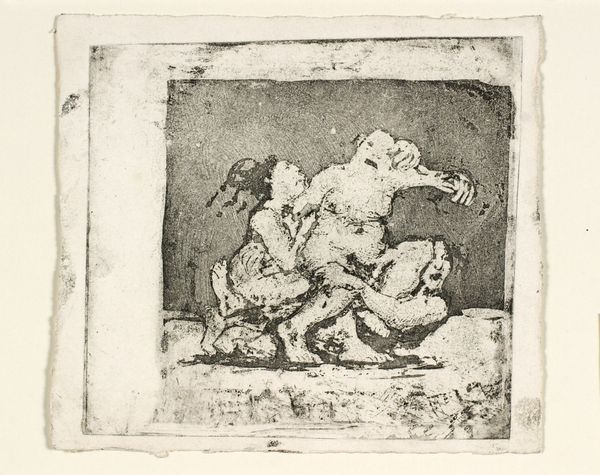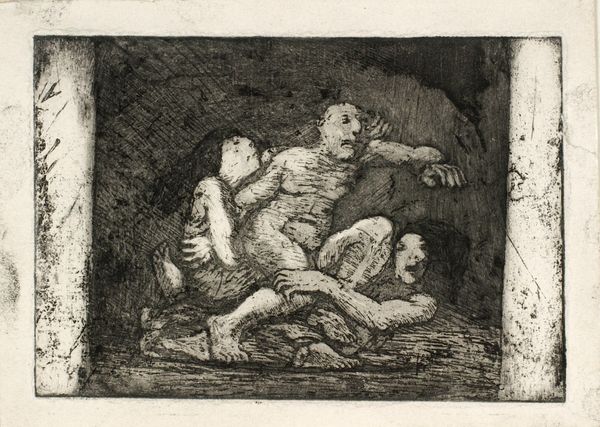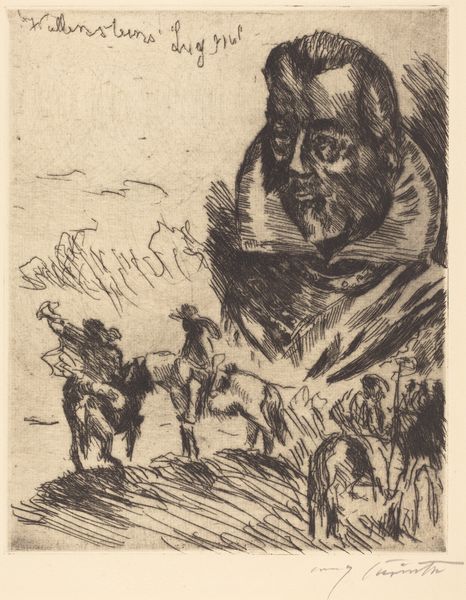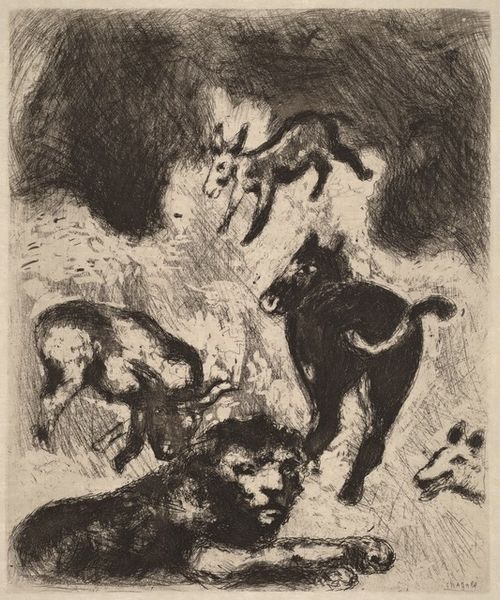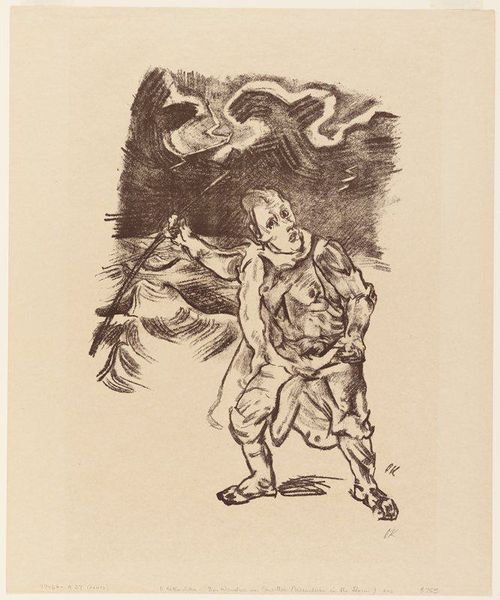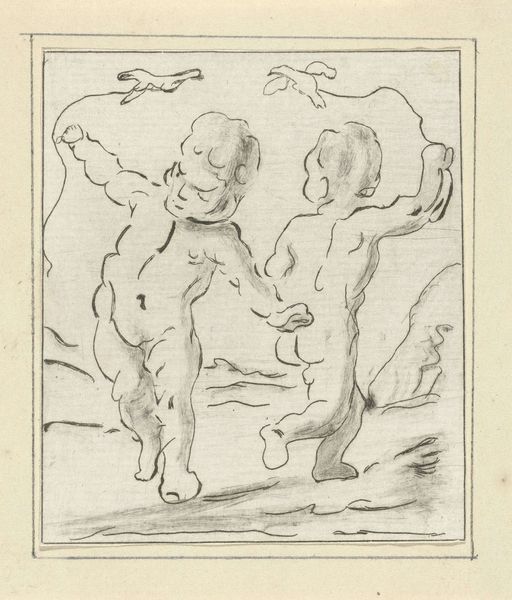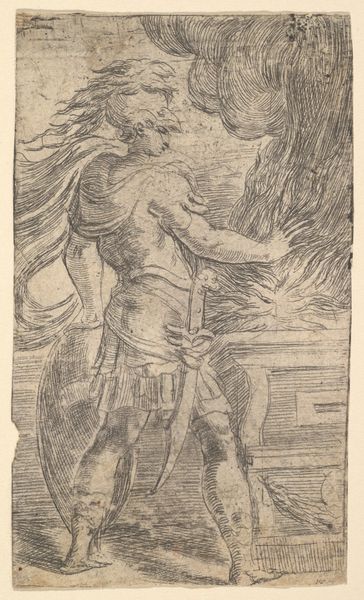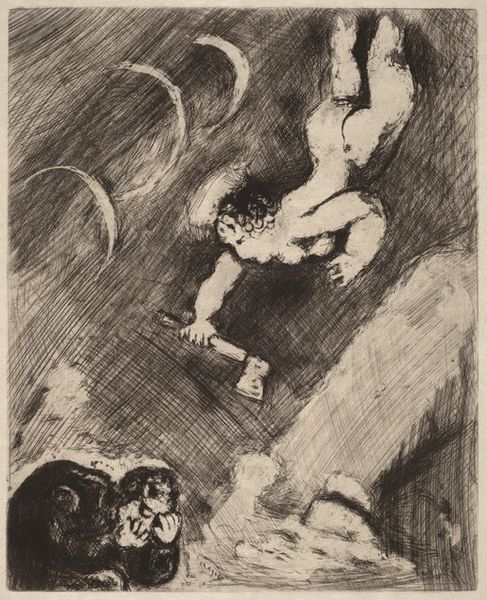
aquatint, print, etching
#
aquatint
#
narrative-art
# print
#
etching
#
figuration
#
symbolism
Dimensions: 116 mm (height) x 95 mm (width) (plademaal)
Editor: This is "Macbeth og Hexene," or "Macbeth and the Witches," by Oluf Hartmann, created in 1905. It’s an aquatint and etching print. I'm immediately struck by how… rough it looks, the stark contrast, the scratchy lines of the aquatint. It creates such a feeling of unease. What can you tell me about it? Curator: Consider the materials, first. Etching and aquatint are processes involving acid, biting into the metal plate. The very method speaks to a kind of violent consumption, doesn't it? How that plate then translates through a printing press onto paper. This process reflects the darker narrative themes Hartmann engages with: ambition, power, corruption. Think of the labor involved, the corrosive agency of acid; it embodies a brutal transformation, reflecting the moral decay in Shakespeare's play. Editor: That's a really interesting perspective. I hadn’t considered the processes themselves reflecting the subject matter. It almost feels like the aquatint and etching themselves are agents of corruption. Curator: Precisely. The question becomes: How does this artwork reflect the economic and social standing of printmaking at that time? This wasn't 'high art' in the same vein as painting or sculpture, yet Hartmann is using this *craft* to engage with weighty, canonical subject matter. He challenges conventional high/low art boundaries through his material choices, raising the discourse around who consumes these stories. Consider, for whom was this print intended? What type of person could buy or want this? Editor: So, you’re saying that it makes a statement by virtue of being a print? It challenges the norms around accessibility to art and literature? Curator: Exactly. Hartmann is making a statement about material, method, and medium by elevating this to this form, engaging audiences beyond traditional art circles. Now consider this within turn-of-the-century art and cultural discourses and suddenly you will gain access to even more complexity. Editor: I see that, thinking about it as a commentary on social class and cultural access through the lens of materials definitely deepens my understanding. Curator: It brings a different layer of critical thinking and the opportunity for understanding the material processes shaping the image’s meaning, shifting from simple interpretation to understanding *why* the artist chose this method and how the culture affected this process and the subject.
Comments
No comments
Be the first to comment and join the conversation on the ultimate creative platform.

